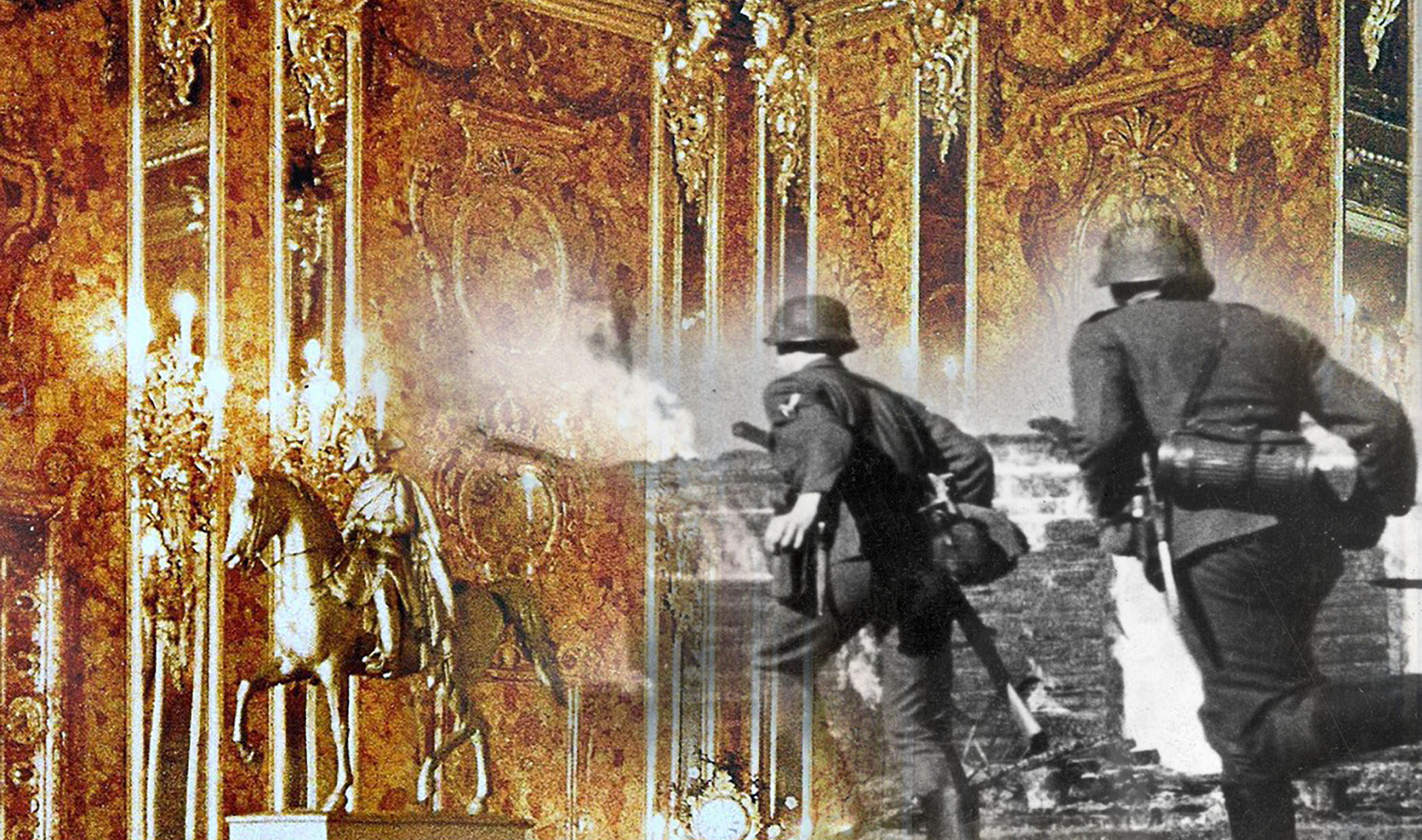A legendary room with radiant amber walls, built to shine upon kings, vanished from Russia during World War II, leaving a mystery that continues to confound researchers.
The so-called “Amber Room” was a marvel of Baroque architecture. Designed and constructed by German and Danish artisans for the ruler of Prussia in 1701, the room featured gold-plated walls of amber mosaic embellished with paintings and mirrors. Amber, known for its natural warmth and capacity to reflect light, produced a magnificent effect in the room, creating a kaleidoscopic array of gold, orange and copper hues.
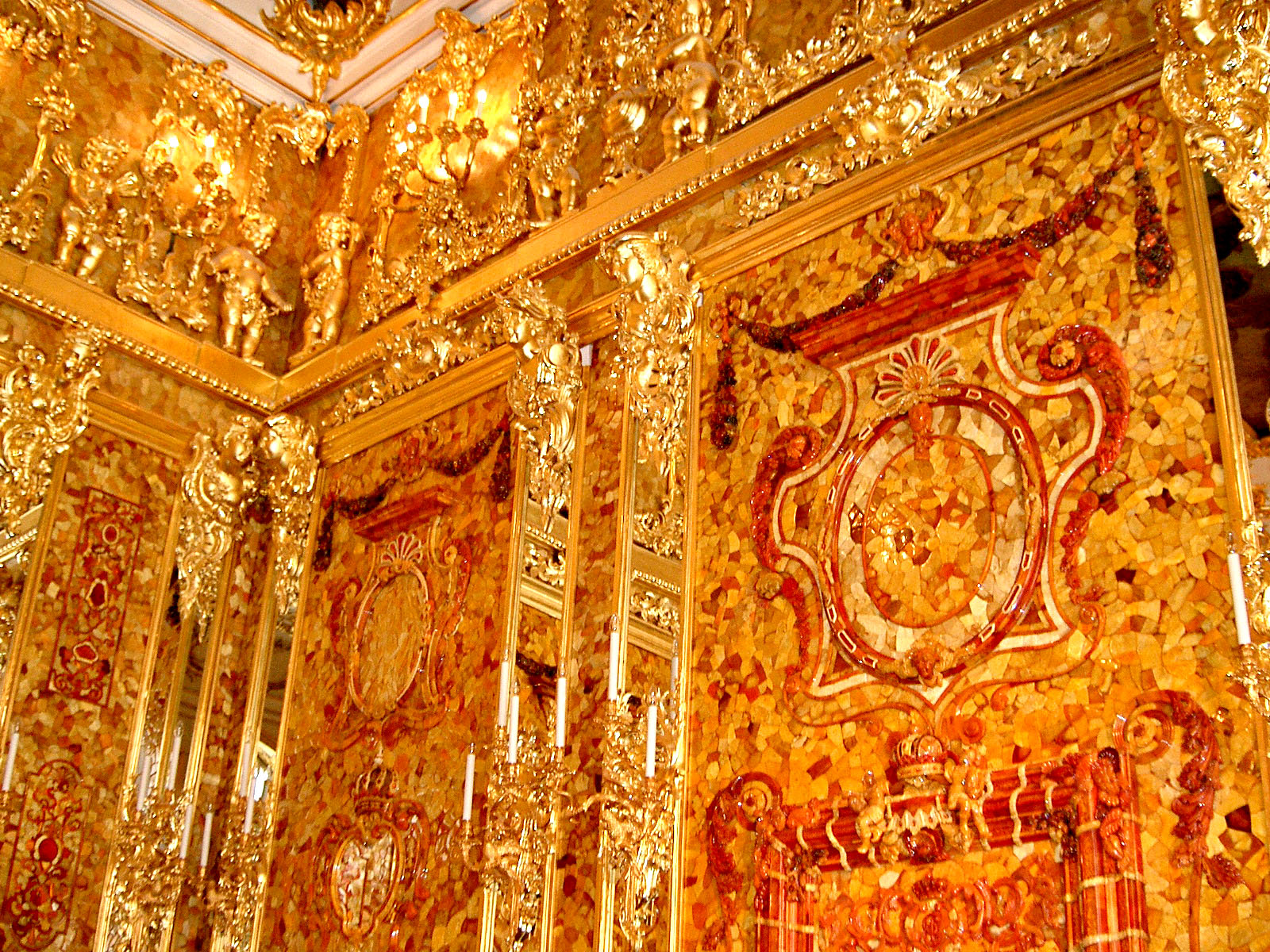
The room was a gift to Russia’s Peter the Great from Frederick William I of Prussia, nicknamed the “Soldier King,” due to his militarism. The German ruler used the Amber Room as a bargaining chip to secure the powerful tsar’s alliance in war against Sweden. In return, the tsar presented Frederick William I with 55 Russian grenadiers.
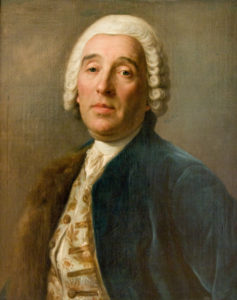
Transported to Russia in no fewer than 18 containers, the magnificent room was never installed during Peter’s lifetime, but instead came to light when his daughter Elizabeth employed Italian architect Francesco Bartolomeo Rastrelli to construct it. Rastrelli incorporated Florentine mosaic techniques, wood carvings and murals into his assembly of the room, offsetting the originally spartan German design with a distinctly Italian twist. The Amber Room served as an official reception room for royal guests. It was eventually moved in all its brilliance to the Catherine Palace in Tsarskoye Selo, outside Leningrad.
The Amber Room was not fated to remain there in peace. By the time Nazi Germany invaded the Soviet Union in 1941, the Third Reich had already masterminded a system of organized looting and art theft.
The SS, under the leadership of Heinrich Himmler, worked closely with the Wehrmacht and special task forces (Einsatzkommandos) to loot, classify and store works of art and historical artifacts.
The task forces—such as one ordered by Himmler to “restore” Quedlinburg cathedral—generally included art historians, professional and amateur archaeologists, SS liaison officers and Nazi pseudo-scientists. They often worked in collaboration with the Ahnenerbe, Himmler’s racial “research” organization, and Einsatzstab Reichsleiter Rosenberg (ERR), a cultural looting organization headed by Alfred Rosenberg.
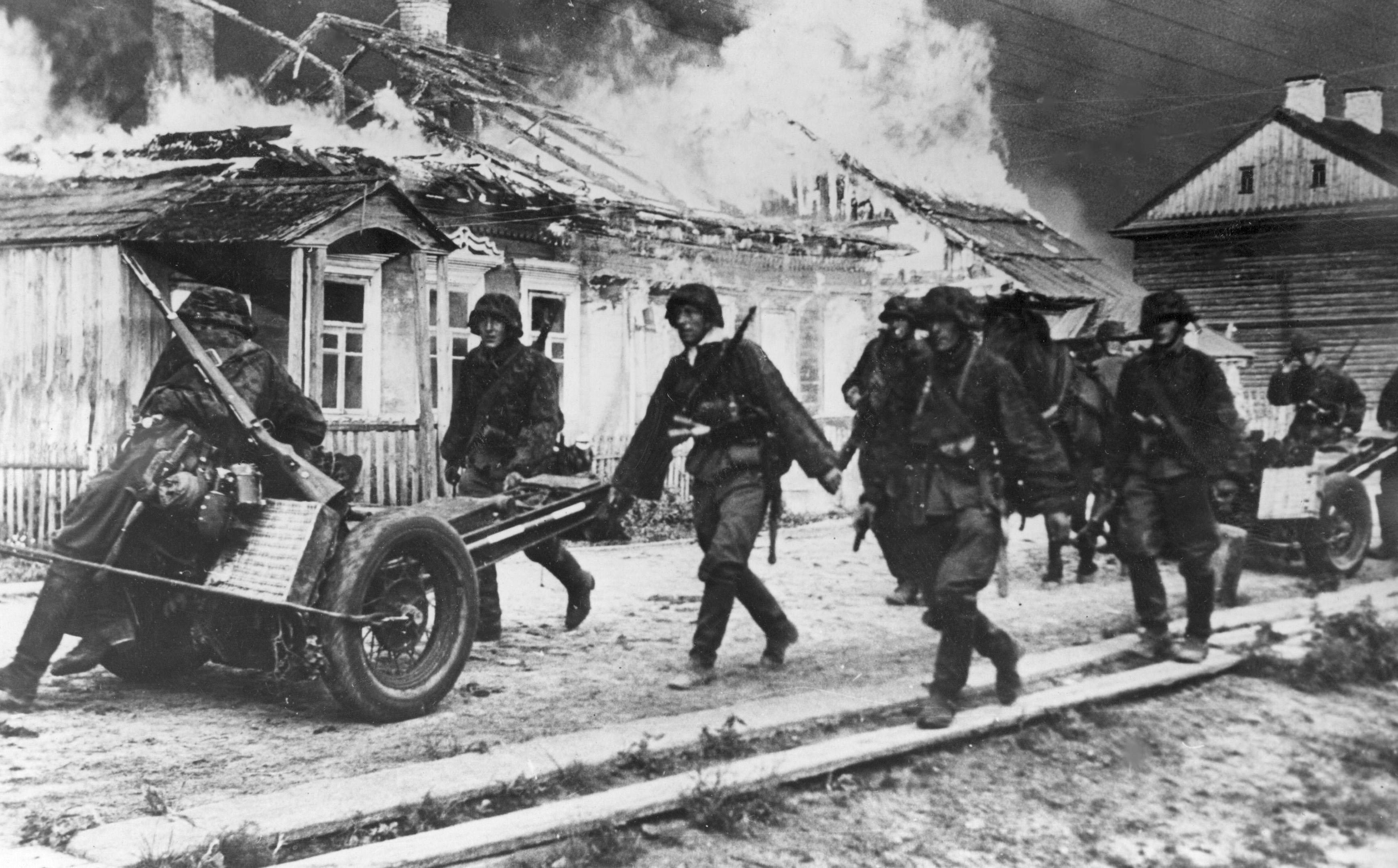
On the Eastern Front, the SS–Sonderkommando Künsberg, a task force consisting of six groups, was ordered to seize cultural materials from the Soviet Union, according to German scholar Ulrike Hartung. The task force was assimilated into the Waffen-SS as of Aug. 1, 1941, as Gruppe Künsberg. Areas along the Eastern Front were carefully divided and assigned. The groups, abbreviated as EKs, were ordered to seize archival materials, maps and various work of art. Aiming to take “high-value” items from Russia, some items they seized included marble, paintings, furniture and chandeliers.
Each group was given a code name. The Waffen-SS task force actively plundering the Leningrad area in tandem with Army Group North was alternatively known by the code names “EK Stettin” and “EK Hamburg.” This SS group was active in Riga, Vilnius, Narva and Tallinn.
This task force also took a special interest in Leningrad’s palaces—they plundered the Great Gatchina Palace, Pavlovsk Palace, the Ropsha palace and the Peterhof. Their depredations also focused on the Catherine Palace at Tsarskoye Selo—particularly the Amber Room.
Before the arrival of German troops, the Russians were unable to dismantle and move the Amber Room to safety. The Germans had advanced more quickly than they had expected. Additionally, removing the precious materials from the royal room’s walls proved too difficult on short notice—not wishing to destroy their history, the Russians insulated the Amber Room’s walls with paper, gauze and wool, and boarded up the windows to protect it from bombing and looting.
The Germans, however, were more than prepared to pillage the hallowed halls when they arrived in September 1941. All German soldiers participating in Operation Barbarossa had been informed by their highest political and military authorities that they would not be held accountable for any criminal actions they took while fighting “Bolsheviks” on the Eastern Front. The troops therefore behaved lawlessly.

When men of Army Group North reached the Catherine Palace in September 1941, they vandalized the Amber Room by smashing stucco and cracking the amber walls with their rifle butts. They allegedly stole shards of amber, while some soldiers reportedly pried an entire mosaic off the wall to keep as a souvenir.
The SS task force “EK Hamburg” quickly took control of the space. Nazi art historian Ernst Otto zu Solms-Laubach, a so-called military “art protection” officer, played a leading role in stealing the Amber Room. On Oct. 14, 1941, a team working with Solms-Laubach and his colleague Georg Poensgen dismantled the entire Amber Room within 36 hours and packed it into 28 cases.
The famed Amber Room of Russia’s lost empire was shipped to the city of Königsberg, now known as Kaliningrad. There it was partially unpacked and arranged in a museum exhibit by Dr. Alfred Rohde, director of Königsberg city museum (Stadtgeschichtliche Museum Königsberg) and the city’s art collections. Rohde was an amber expert and had penned two books on the subject.
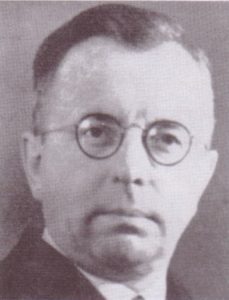
Elements of the room were displayed for public viewing on the third floor in the south wing of the castle. The exhibit was dismantled in March 1944 under Rohde’s supervision to protect it from Allied bombing. It is alleged to have been repacked in 28 new cases and stored in the lower vaults of the castle to shield it from fire and shell damage. During this time, Rohde is alleged to have moved some art objects under his care to Lansberg, now Gorowo Ilaweckie in present-day Poland.
The Königsberg castle was the Amber Room’s last confirmed location. The castle was largely destroyed during raids by the British Royal Air Force in August 1944, which left most of the city in ruins. The city itself was later overtaken by the Red Army. By April 6, 1945, the Amber Room had completely disappeared.
Rohde, who survived the siege of the city in his apartment, remained silent about the whereabouts of the room. He died in a local hospital in December 1945, taking the secret to his grave. The castle itself was leveled by Soviet authorities in 1967.
What became of the magnificent Amber Room? The glittering salon of Russian empresses has become the stuff of legend. The quest to find its location has inspired a long list of would-be searchers, including private detectives, journalists, filmmakers, historians and art experts. Dr. Paul Enke, an Oberstleutnant of the formidable East German secret police (Stasi), investigated more than 150 alleged locations of the Amber Room in East German territory in an expensive pursuit. One researcher met with an untimely death.
Some researchers insist the Amber Room was destroyed. Others believe the Nazis would have salvaged it.
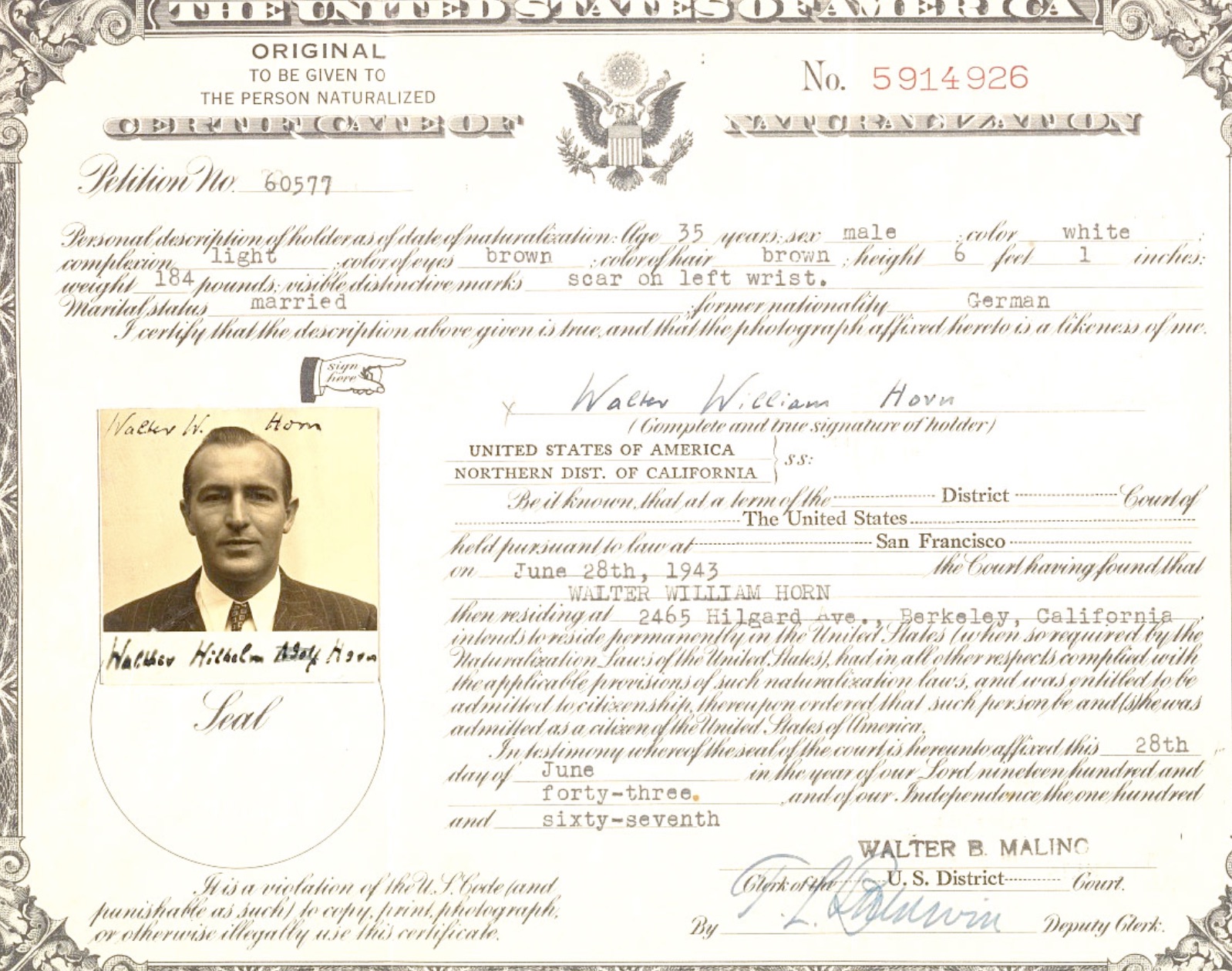
It is true that the Nazis were known to hide artifacts in obscure locations. For example, they successfully concealed the crown jewels of the Holy Roman Emperor in a secret vault below the city of Nuremberg. German officials befuddled Allied authorities with various ruses for some time after the end of the war about the fate of the artifacts. The truth of the jewels’ location was eventually uncovered by German-born U.S. “Monuments Man” Walter William Horn, who used his language skills and cultural awareness to pry the truth from several German officials who had been obstinately concealing the facts. As a result of Horn’s success, the historic royal regalia was repatriated to Vienna. However, Allied authorities had no such luck with the Amber Room.
Seekers of the legendary treasure have developed various colorful theories about its whereabouts. The Amber Room has been alleged to have been hidden in underground tunnels, sunken in shipwrecks, hidden in the Erzgebirge mountains, flown to a Baltic island or buried in the sand dunes of the Curonian Spit near Kaliningrad. Excavations at the former site of the Königsberg castle have turned up no results.
The gutted remnant of the Amber Room stayed frozen in time for many years in Tsarskoye Selo after the war ended. Although Soviet artisans began laboring to restore damaged cities and lost cultural heritage, no one was capable of recreating the lost glory of the imperial room. The project was too expensive, and no institution in Soviet territory taught the lost art of amber sculpting.
Traces of Nazi plundering haunted the gloomy space inside the Catherine Palace for decades until the USSR passed a resolution in 1979 to rebuild the Amber Room. It was a bold undertaking—at that time, the Russians had limited resources and little prospect of success. The only visual evidence they had of the room in its magnificence were black-and-white photographs. As of 1983, only five people were working on the team to restore the room.
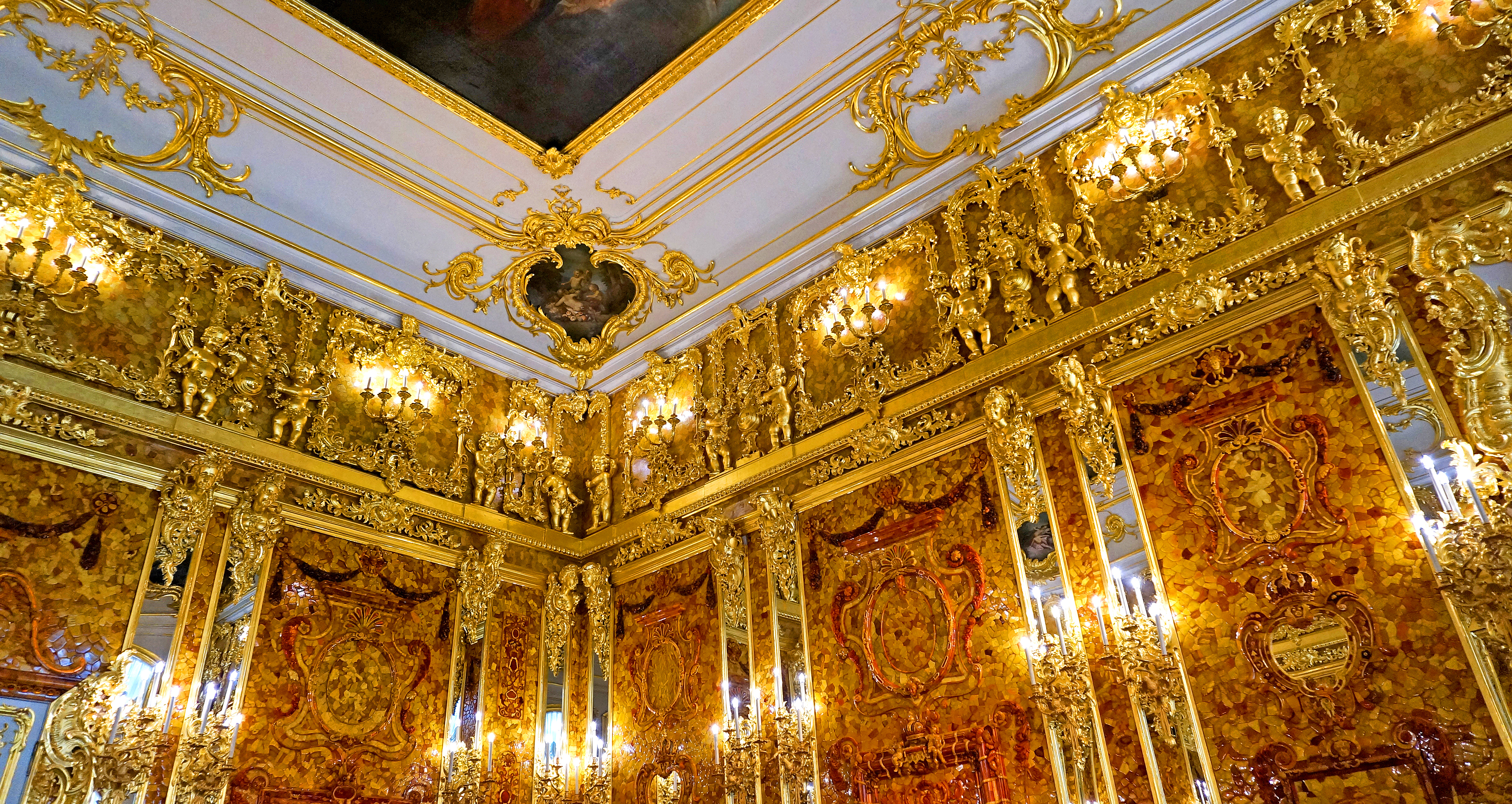
Time and, above all, determination attracted success. By 1994, the Russian team had amassed a large body of archival research and begun mastering Florentine mosaic techniques identical to those used by Rastrelli. In 1997 the German company Ruhrgas AG helped finance the restoration project with $3.5 million. In addition, the Germans returned a few located fragments of the original room—allegedly untraceable and retrieved from the black market—to Russia on April 29, 2000. A company in Kaliningrad donated 2.5 tons of freshly mined amber.
A group of artists, including woodcarvers, carpenters, painters, worked together with archival researchers to authentically recreate the Amber Room. Many of the conservators had dedicated entire lifetimes to restoring this lost heritage, most notably Alexander Kedrinsky.
As a result of painstaking effort, an exact copy of the mythical Amber Room was completed in 2003 on the 300th anniversary of the founding of St. Petersburg. While the relics of the original room remain shrouded in mystery, its glittering golden splendor can be seen by curious visitors today.

